hackberry emperor
welcome to A Teetering Vulture! a newsletter about various science stuff as well as the life happenings of its author, Taylor.

A type of butterfly. Medium-sized, with a sequence of dark eyespots at the base of the topside of its rusty wings, which are also tipped in black interspersed with spots of white. The underside—my partner, she said it resembles a pale geode: detailed, circular patterns, concentric rings of faint yellow, and more white. Its eyes look like gray dragon’s eggs splotched with black, and its antennae like striped and straightened cables. I’d never consciously acknowledged this native inhabitant of Ohio until this week, when one became my companion during a walk in the park.
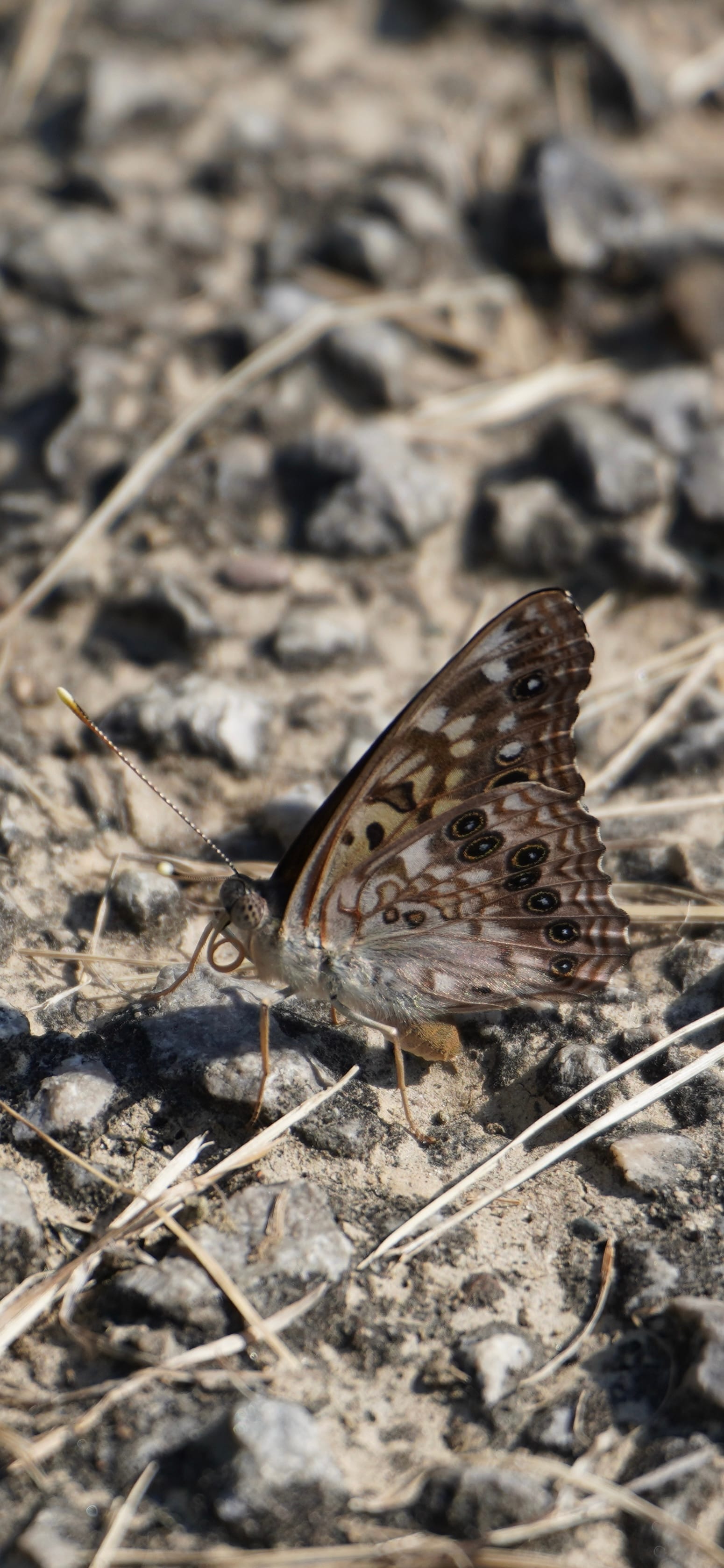
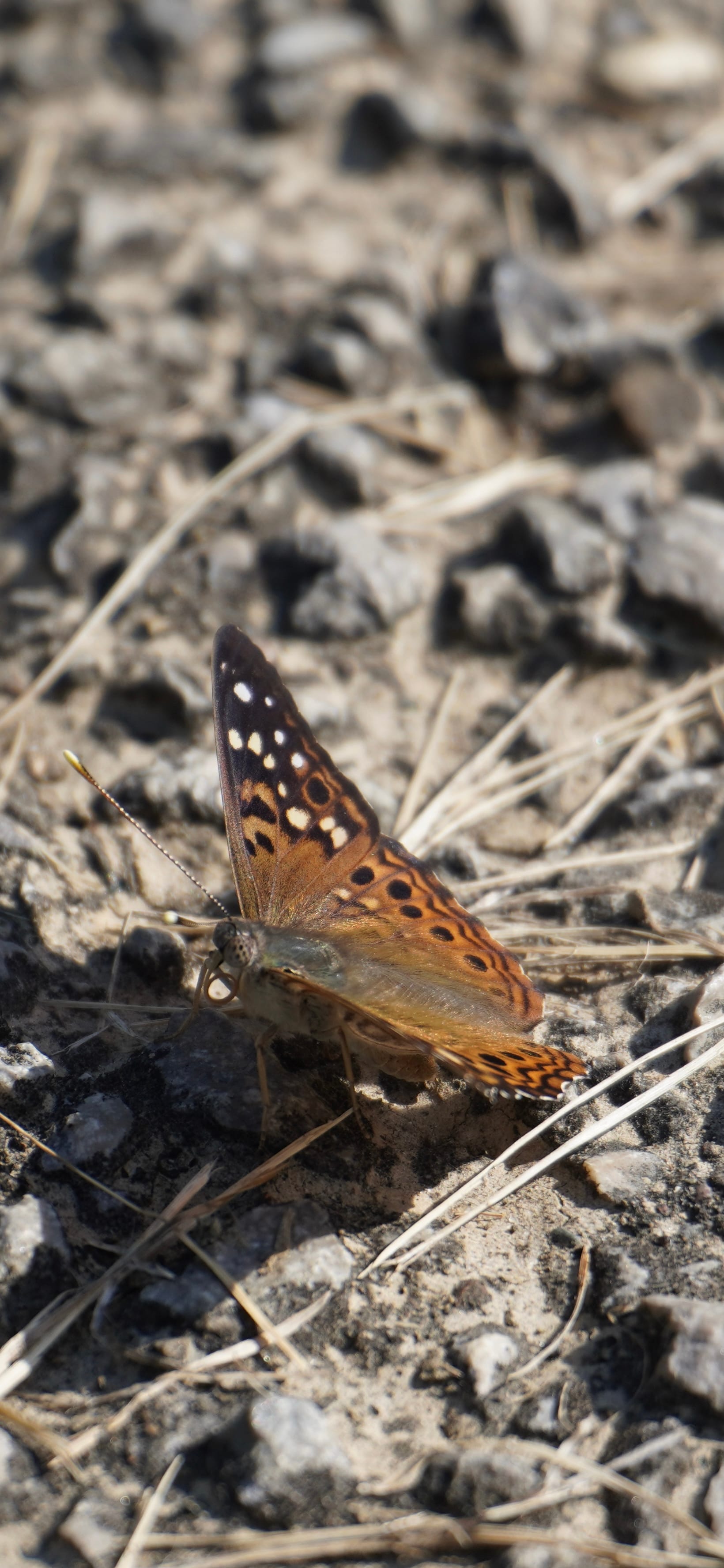
Hackberry Emperor I met while hiking
Over the weekend, almost on a whim, I participated in an annual butterfly count organized by the North American Butterfly Assocation. I had been searching online for birding events around Cincinnati, but stumbled across this instead. Unfamiliar with butterflies beyond the absolute basics, I had few doubts that I would learn quite a lot, if I decided to go. And so I did. I spent half a day meandering slowly through a Hamilton County park with two people much more experienced than me at identifying butterflies—a young married couple who conduct butterfly surveys weekly at Fernald Nature Preserve in Hamilton. We stepped carefully along a trail pocked with an annoying quantity of poison ivy, our eyes scanning for any diaphanous winged movement amongst the trees, brambles, and prairie plants. Occasionally we would pass other groups of butterfly seekers and exchange information about what we’d already seen with them, so that we didn’t overcount. Though, we ultimately didn’t see much—by lunchtime we had tallied 13 species out of more than 80 that call southwest Ohio home this time of year. The couple agreed with me when I asked if it was true what I’d already read online about the diversity of butterfly species declining steadily each year that these counts took place. Just like the decline in birds in the US, they said, butterflies just aren’t around as much anymore either.
Despite that, I did indeed meet and learn about some unfamiliar butterflies. It honestly delights me how much I still don’t know about the world in the immediate vicinity of where I grew up. After spending a good half-hour or so mildly baffled as my teammates kept shouting about punctuation, for example, I learned that there are, in fact, two butterflies named after punctuation: the Eastern Comma and the Question Mark. Both butterflies are in a family called the Anglewings, and both resemble rather large, brown, decayed leaves, or leaves that have had their edges munched away at. The main difference between them is a small white mark on their wings; one has a white spot resembling a comma, the other a question mark.
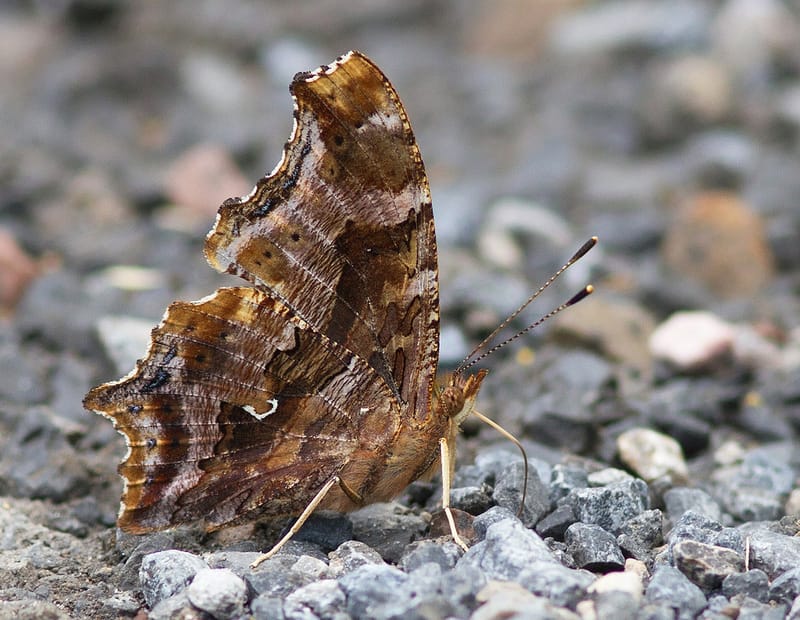
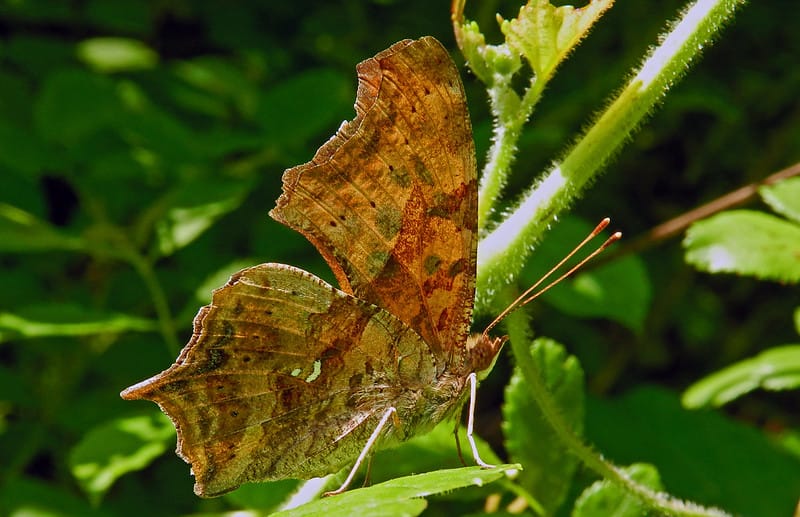
Eastern Comma and Question Mark (photos by Mark Johnson and Bonnie Ott)
When I returned home that evening, I recapitulated the event’s highlights to Dasha, the aforementioned partner. I read to her from a pamphlet I’d received about the wonderful names of the families of butterflies I’d learned about: Brush-footed butterflies, skippers, satyrs, sulphurs, hairstreaks, snouts, and so on. I showed her photos I’d taken of sachems, small skipper-type butterflies I’d known about since I was a kid but never paid overmuch attention to. When Madison and I were young, we’d given them our own name: jets—for the way we thought their unique wing-structure resembled a certain kind of combat aircraft.
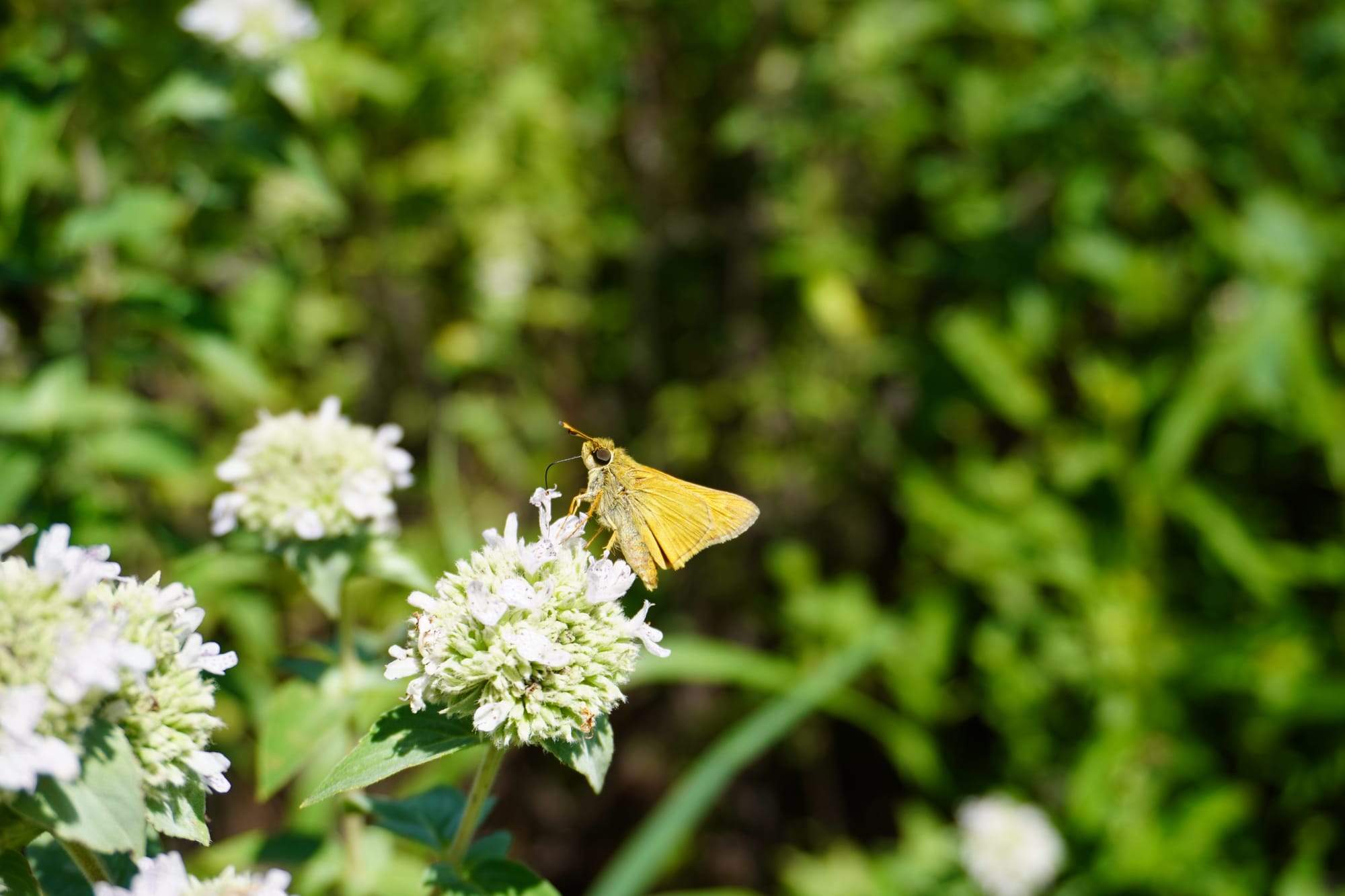
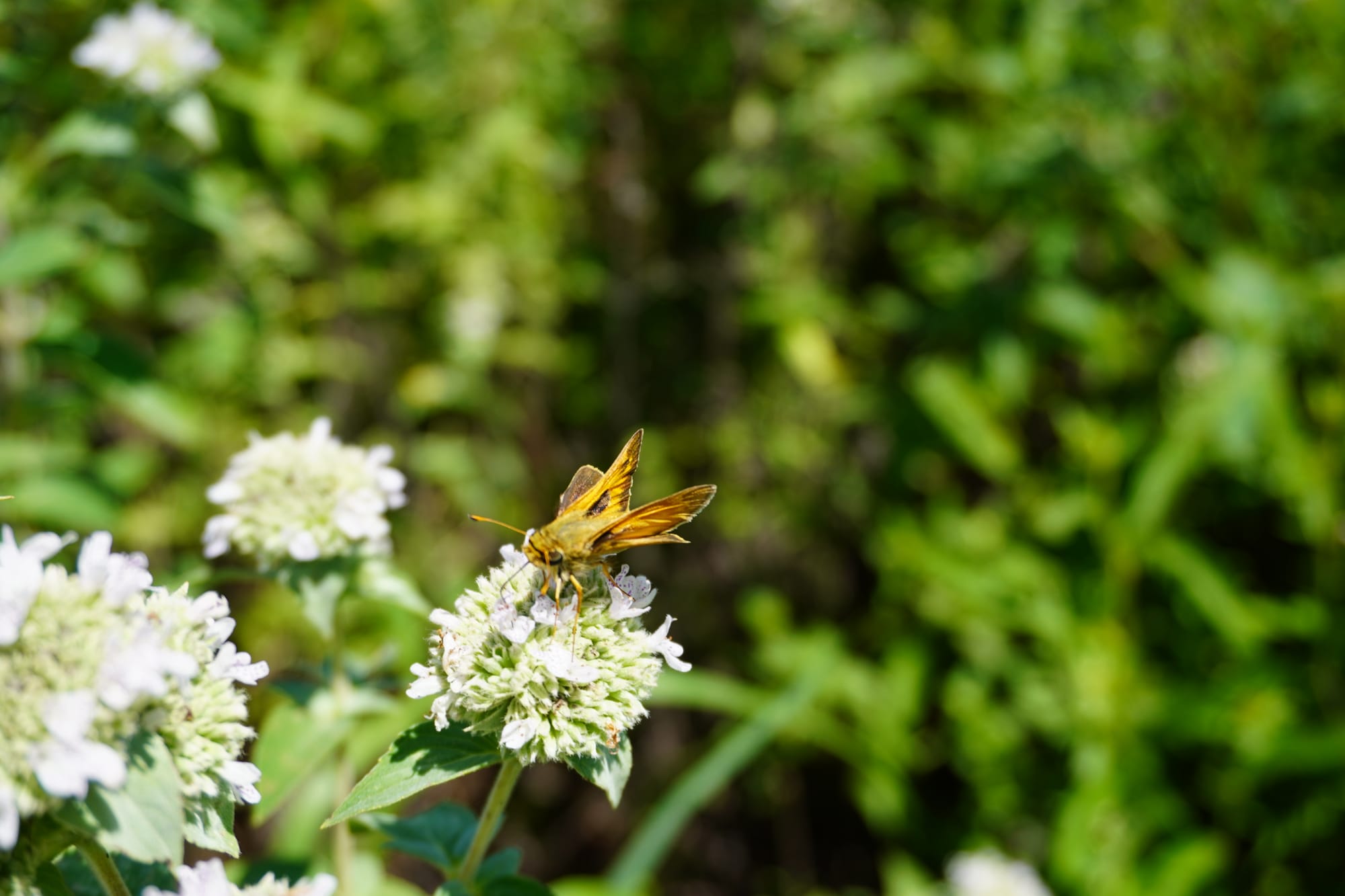
Sachem skipper butterflys
Like a new word you learn and then begin noticing everywhere, the Hackberry Emperor appeared to me a day or so later not as a surprise, but almost as an expected greeter. Never in my life have I had a butterfly tag along with me on a hike, but this one almost seemed to be saying: Hey! You like butterflies now and you want to take pictures of us? Well, here I am! Welcome to our world! Madison said it might have been a spirit. Dasha said it had probably been sent by a witch to say hello.
It landed all over my hat, my face, my glasses, and stuck with me for probably a mile. I could feel its gentle wings fluttering against my brow and my cheeks every so often, and when I didn’t know where it was I assumed it was on my back somewhere, or perched on top of my hat. I was alone on a paved trail that was open to the blazing sun. It was nearing 90 degrees at around 10:30 am. The reality, which I learned for certain later but suspected while I was on the trail, was that this creature was after my sweat. Hackberry Emporers are not pollinators, but instead feed on such things as sap, carrion, feces, fruit, and the sodium in sweat. As their name suggests, their host tree is the hackberry, which for Ohio means the singular species of hackberry known as the American Hackberry (Celtis occidentalis). In their larval form they feed upon the leaves of the tree, after hatching from eggs laid too on the leaves.
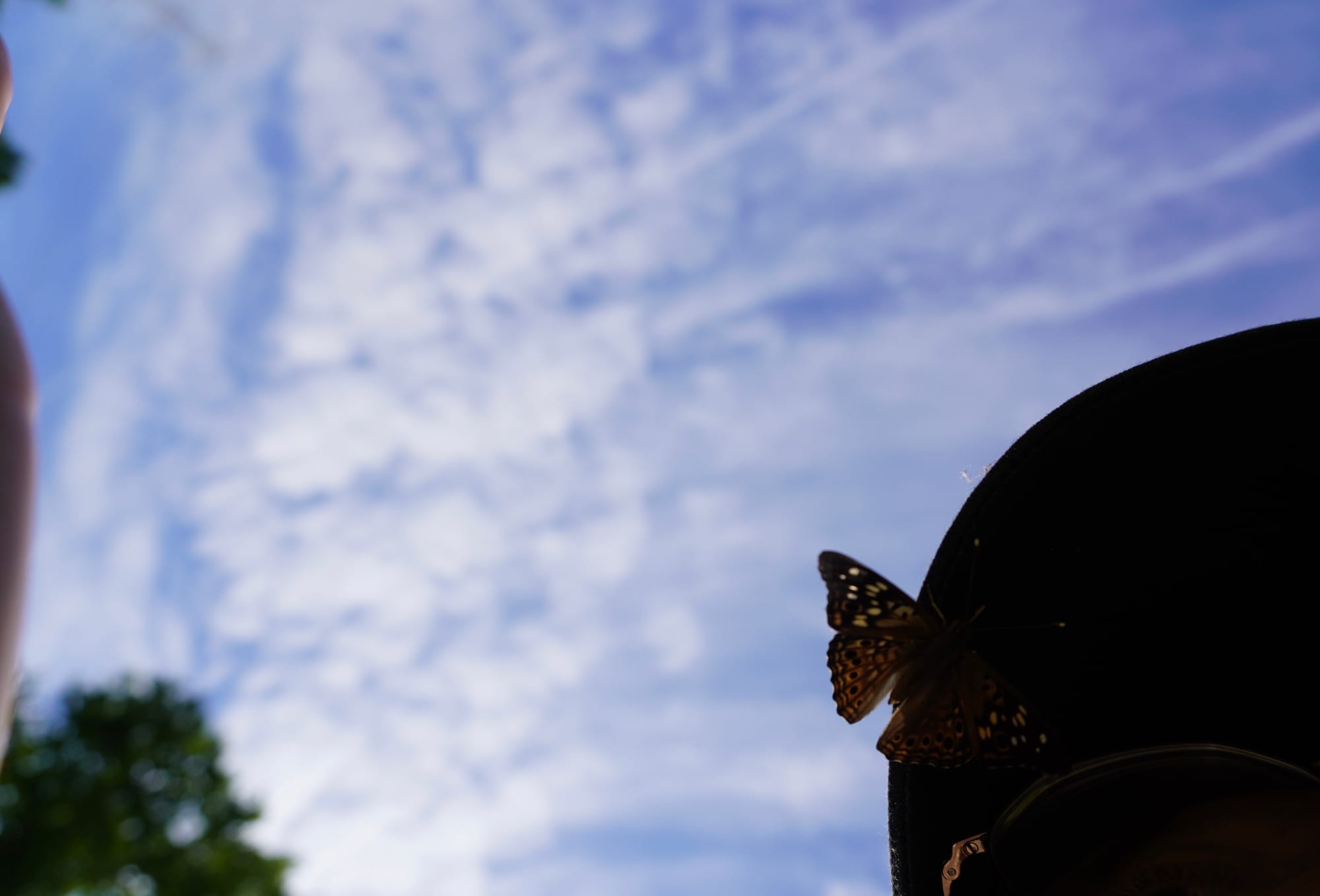
It was a memorable and fun encounter. Being with the butterfly helped me feel less alone out amongst the hilly Ohio fields. Recently, I’ve been telling anyone who will listen that going outside with the intention to photograph bugs comes with a guarantee that I will learn about a bug I previously didn’t know existed, or one I had seen before but certainly couldn’t put a name to. It brings me comfort to know that there are people counting butterflies every week in this city, and that there are many others who are also paying attention, who are aware that we need to change our relationship with our ecosystems in order to restore habitats and make space for insects to thrive again, so that other species like plants and birds can also thrive. I highly recommend spending an hour or two outside looking for strange bugs every now and again, if you can, if you want. I promise that, unless perhaps you’re an entomologist or someone adjacent, you will discover something you previously didn’t know about the world. It’s an easy thing to do, to learn something new—yet that doesn’t make it any less incredible, or worthwhile. Who knows, you might even befriend some little being.